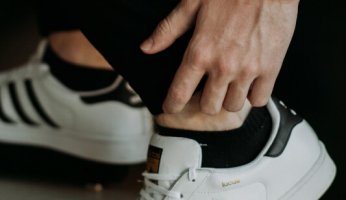Compression Socks: Benefits and How to Choose Them
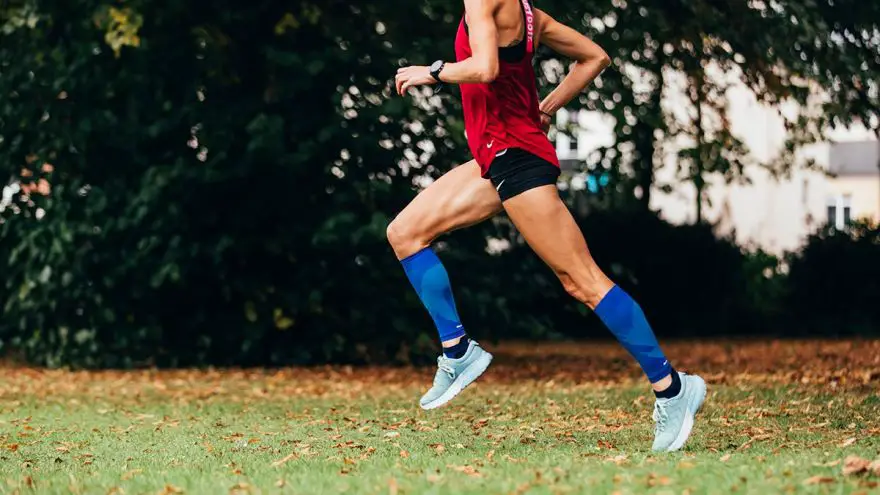 Compression Socks: Benefits and How to Choose Them
gearweare.net
Compression Socks: Benefits and How to Choose Them
gearweare.net
Compression socks are very important to wear when a person is working out. One might ask what are the compression socks benefits? First thing is that they help with circulation and keep the muscles and ligaments compressed so there are fewer injuries. They also make a person’s legs feel really good when they are running because they are lightweight and help control the varicosity of the legs (read more in our guide on the best compression socks for running).
Many adults begin to get varicose veins if they stand at their jobs most of the day, and women tend to get them when they are pregnant. It’s a very uncomfortable feeling, so choosing the right compression socks is important for any person that is involved in any type of sports and especially true if one wants to feel the compression socks benefits.
People wear these socks for comfort, to assist their performance in sports, and to prevent injuries. The improvement of circulation helps keep the pain at bay. They also help a person not to get a vein thrombosis, which is a specific kind of clot in the blood. The compression socks are also suitable for different types of circulation problems. Compression socks come in all sorts of different strengths and sizes. Your doctor will choose from which socks are right for you.
Table of Contents
What are Compression Socks?
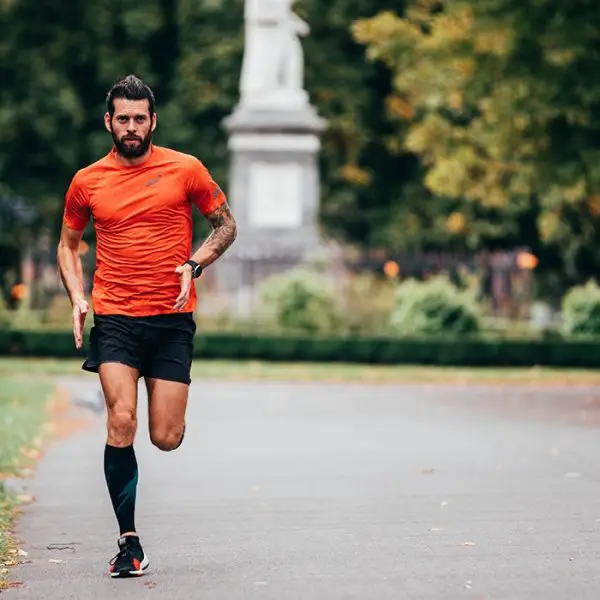
Compression socks are similar to stockings and are made in a unique way to fit your legs very snugly. They are not too tight, but they are comfortable and stretchy and gently squeeze the leg.
Then there are graduated compression socks called pressure stockings, tighter, especially around the ankle.
The socks loosen up as they move up the legs. There are also compression sleeves, which fit like a tube because the foot part is missing.
These are available for over the counter purchase, and if your doctor writes a prescription, your insurance should pay for it. People can also buy them at medical supply companies, online and at drug stores that carry medical supplies. The cost is anywhere from ten dollars to 100 dollars.
Who Should Wear Compression Socks?
Compression socks are for people that have problems with circulation, from diabetes, deep vein thrombosis, or varicosity. People that have just had surgery wear them and people that are bedridden or have issues walking wear compression stockings as well. Great athletes use compression socks along with people who stand at work all day (we highly recommend you check the Rockay Compression Sleeve). Many pregnant women wear them if they are prone to varicose veins and pilots, as well as travelers that fly much of the time use compression socks as well. This keeps their circulation moving.
How Do These Help?
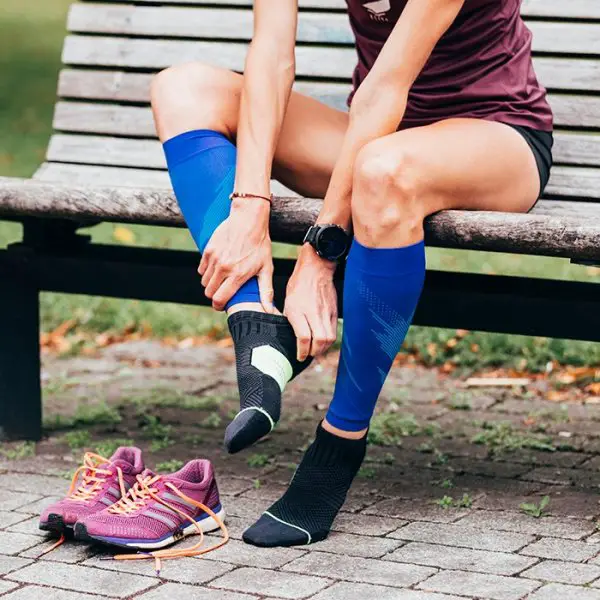
In addition, one of the compression socks benefits is that they together with the sleeves help your blood vessels create the needed supply of blood through the lower parts of the body.
Your arteries use the blood that is high in oxygen and distribute the blood to your muscles to help them relax and to keep the blood moving along.
Compression socks also give your veins a nice flow by moving the blood back up through the heart. They can make a great combination for sportsmen when combined with the compression shorts or compression pants.
These stockings and socks also help keep your legs from getting tired and hurting. They help with the swelling of the feet and ankles and help people with spider veins and varicosity. These socks can even keep people from feeling dizzy and light-headed when they stand up too quickly.
Blood is always moving, and compression socks make it harder for the blood to clot in your veins. When clotting forms and breaks free, it can travel to another spot and get stuck in a dangerous place like your lungs. The clots also make it difficult for the blood to go around the clots. This is when the swelling starts, along with the discoloration of a limb and creates other problems for people.
There are some athletes and runners, including all types of people involved in various forms of exercise, that wear these sleeves on their arms and their legs. This is because they will get better blood flow during their events that prevents tissue damage. More oxygen is delivered to their muscles, and when they finish with these events, their muscles relax quicker from better circulation. But if you are looking for an arm compression you can also check the best armbands for running.
Types of Socks, Stockings, and Sleeves
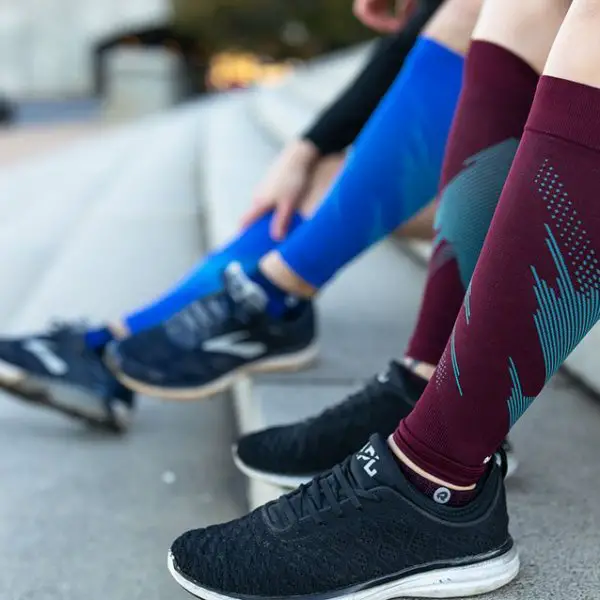
The socks and sleeves come in many different sizes to cover different parts of the body. In the case of DVT, most of the stockings are below the knee or in a way of quarter socks.
There are also thigh highs and tights as well. Compression sleeves, stockings, and socks also have different levels of pressure measured in millimeters. The stockings should fit right, but not feel too tight.
Milder compression in lower numbers is good enough to help the average person who stands all day at work.
Higher numbers are used for Deep vein thrombosis (DVT). These socks prevent it from occurring.
There is a type of stockings called TEDS. The abbreviation means thrombo-embolic deterrent or anti-embolism stockings. Teds are designed for pregnant women and those who are in bed after surgery.
The doctors may prescribe them for people that can’t walk as much to keep their blood flow moving. In the case of medical reasons, a doctor will measure the legs and send you to the right drug store with a prescription for this type of compression stockings.
The Right Way to Wear Them
Keep the stockings smooth against your skin, so they don’t bunch up and make sure they are not too long. Don’t fold them or roll down the tops. In the case of a woman in her third trimester, TEDS has a problem staying up over the belly. If they become too tight, this can cause circulation issues. You can cause cutting off the circulation from rolling them down or wearing them too tight. These feel like a tourniquet by cutting off your blood flow if you do not wear them correctly.
If your doctor wants you to wear Teds or compression socks or stockings, you should wear them as much as possible. You can take them off when it’s time to shower or bathe. You can wear plantar fasciitis socks, slippers, and shoes over the compression socks or stockings. Remember, this might be a temporary thing for some people, so check with your doctor to see how long they want you to wear them. In the case of women who are expecting a baby, they usually can stop wearing them after they deliver their child.
Why Should You Try Compression socks? These are some of the compression socks benefits and the way how to choose the right one for you. If you have some more ideas or comments we would like to hear them from you.








